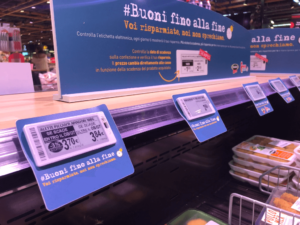I surprised myself by being interested - and even engaged - in dynamic pricing.
Bear with me.
Dynamic pricing isn’t something new. Not to me, any of us in the travel industry, or you as a fellow flyer or frequenter of hotels.
Because when we book a flight, we expect that each flight has different tickets at different prices. And depending on when you book, and how much flexibility you want, the price varies. And if you want the best deals, everyone knows you have to book early.
Now imagine rolling out dynamic pricing to FMCG.
How on earth do you do that with fruit or eggs?
Well, in Italy they’re doing just that. Yes, it’s being done with food. Originating in reducing waste, and in a bid to move away from ‘sticker slapping’ fresh produce nearing its expiry date, Italian hypermarket, Iper, introduced dynamic pricing in stores.

The way it works is that a product – say, yoghurt – is given two prices. One (higher) price for yoghurts with a longer shelf life, and one (lower) price for yoghurts with a short shelf life. So simple it’s genius.
It gets better.
Deloitte analysed their store data after a 12 week test. When two prices were displayed based on expiry date, 41% chose the cheaper, discounted item. As a result, waste was reduced by 39%. And revenues increased 110%. Not only that, but net margins also went up by +1.2%.
The results?
They had less waste, higher margins and increased revenue. And, the store’s ‘eco friendly’ perception rose by 72%. It’s a win, win, win, win.
Pop over to Israel, and start-up Wasteless, has another development. Electronic shelf labelling. It uses an algorithm that looks at 40 factors to automatically change prices on any item. It’s been piloted in Spain, Italy and is about to roll out with German cash and carry, Metro, so we could be seeing it in the UK soon.

Pricing and marketing
Price is such an important part of the marketing mix.
Get any marketer worth their salt involved in a discussion on pricing and they’ll rebuke all day long on the mistake that is ‘cost plus’ pricing. In contrast, dynamic is a brilliant solution for finding the optimum price level.
The results do hail shoppers as being waste-conscious, but I’m not 100% convinced that these price-savvy shoppers aren’t finding lots of out-of-date items in their fridge a week or so later.
That will be the next marketing conundrum no doubt!